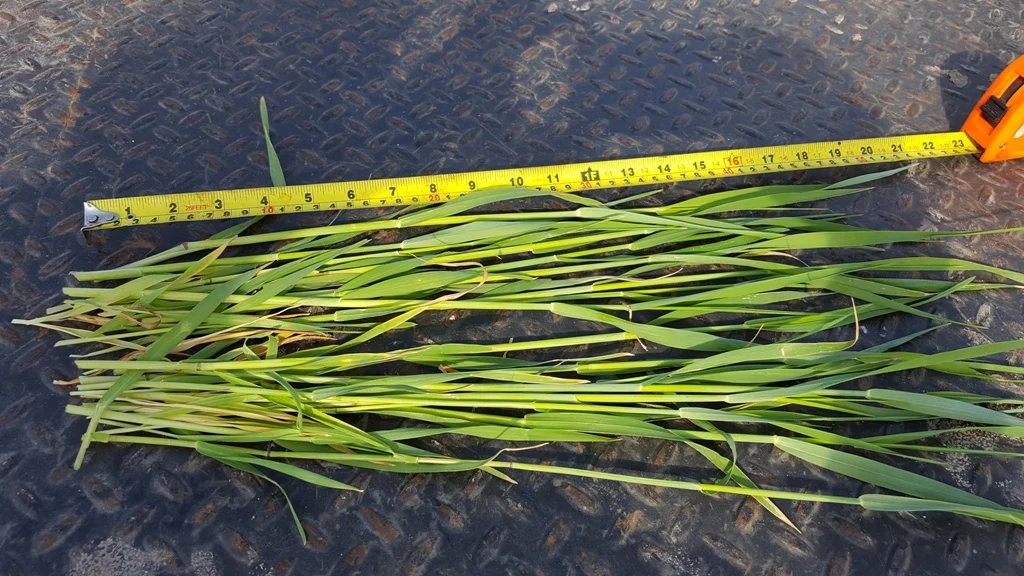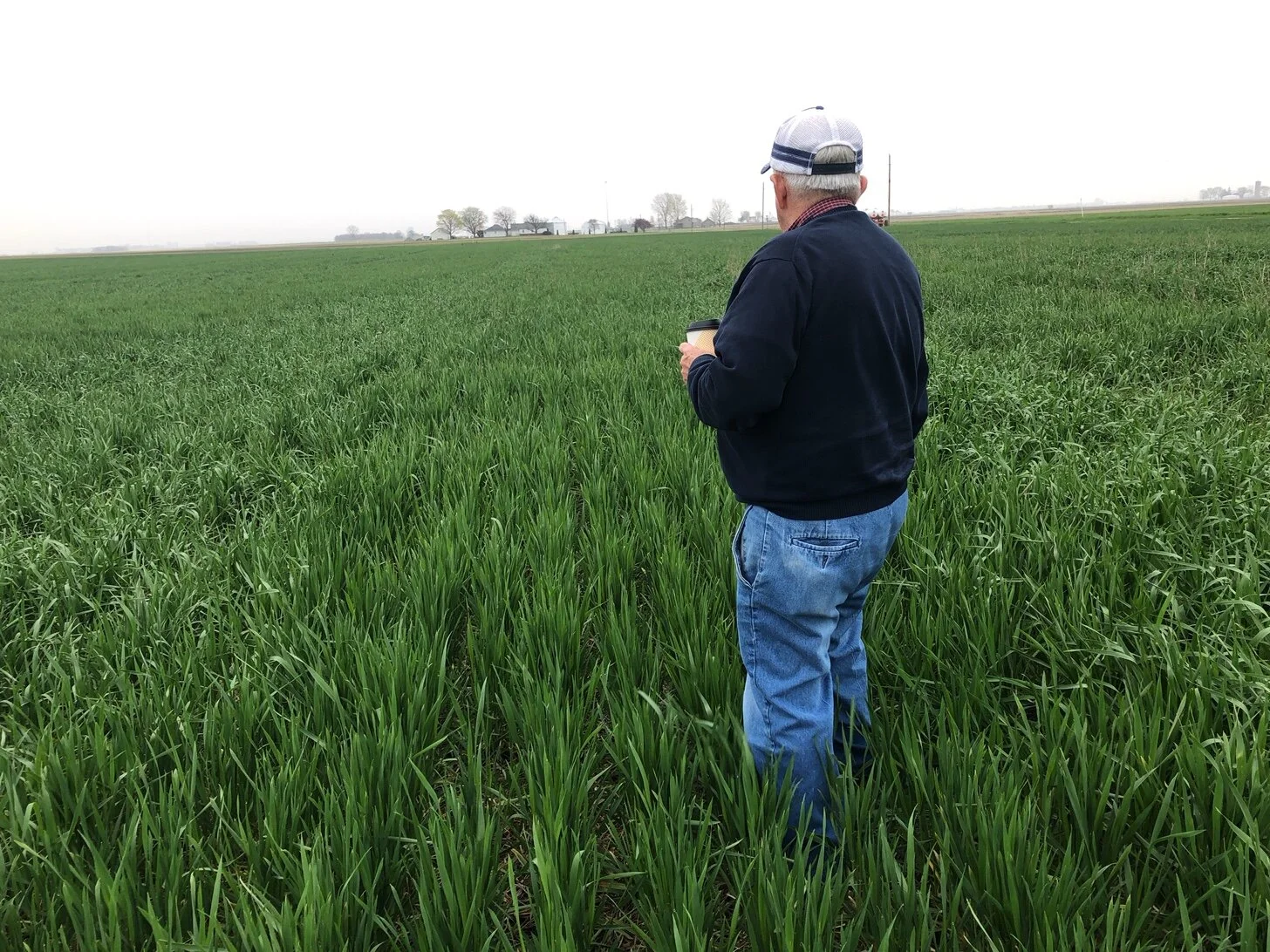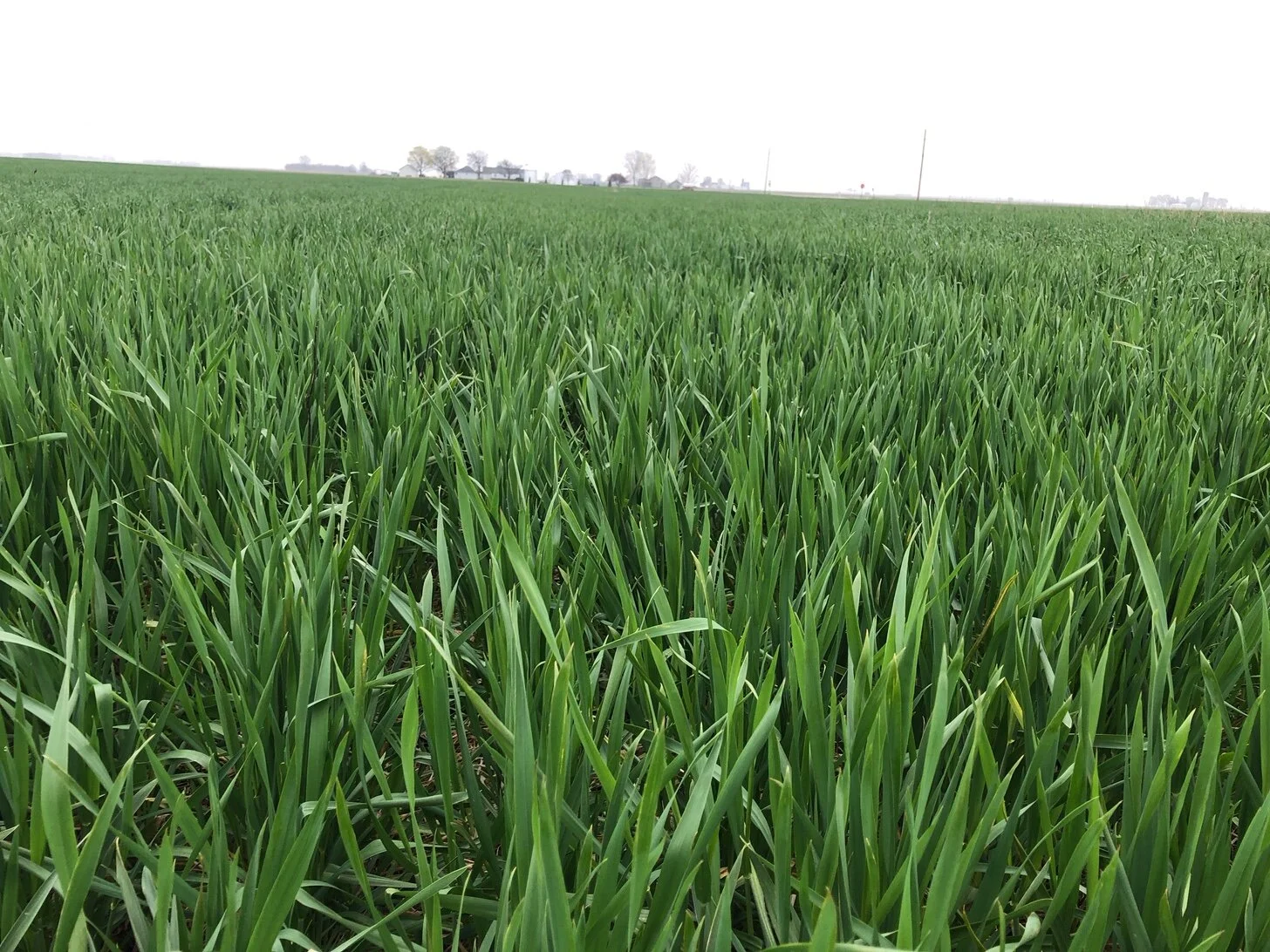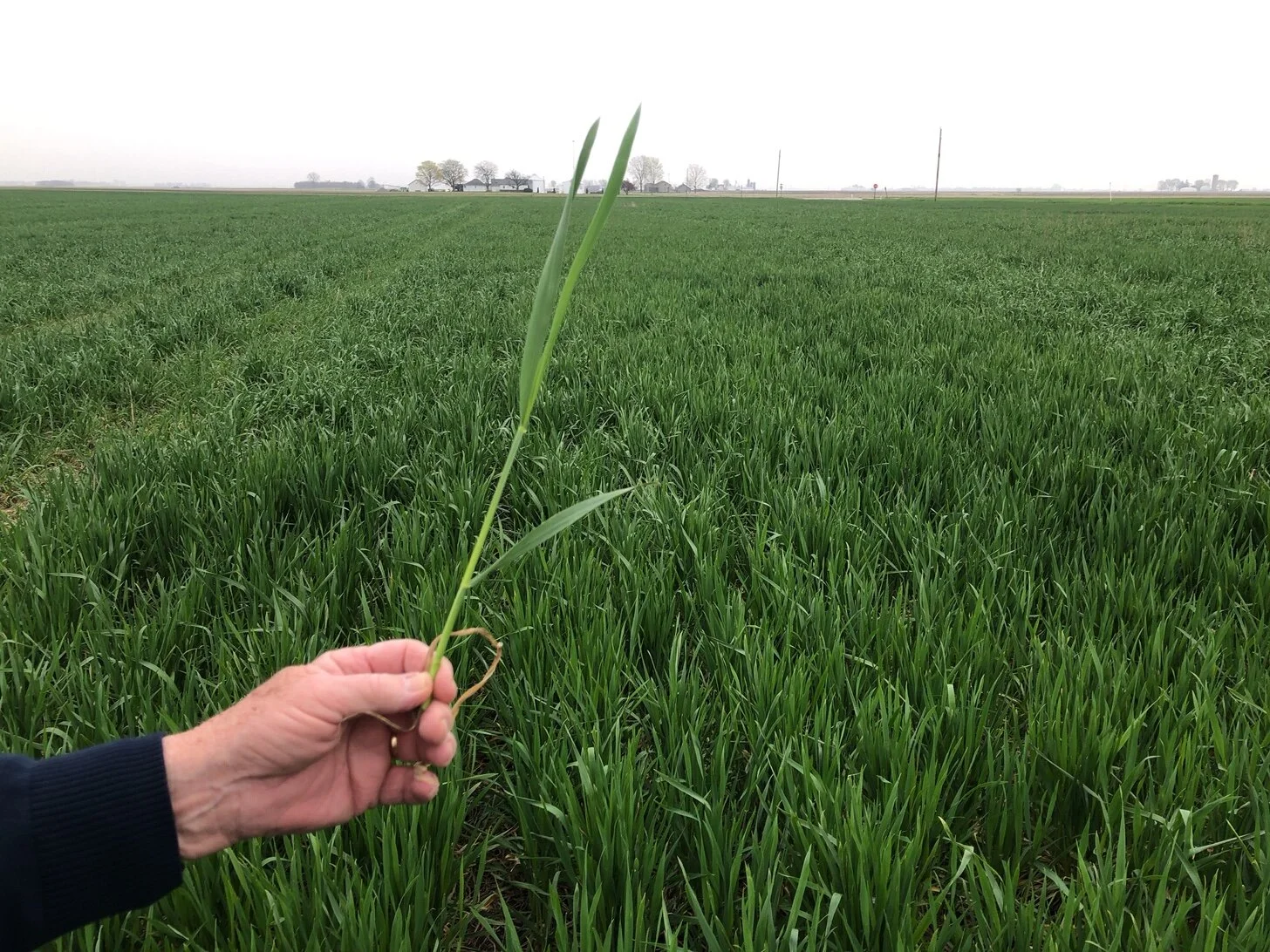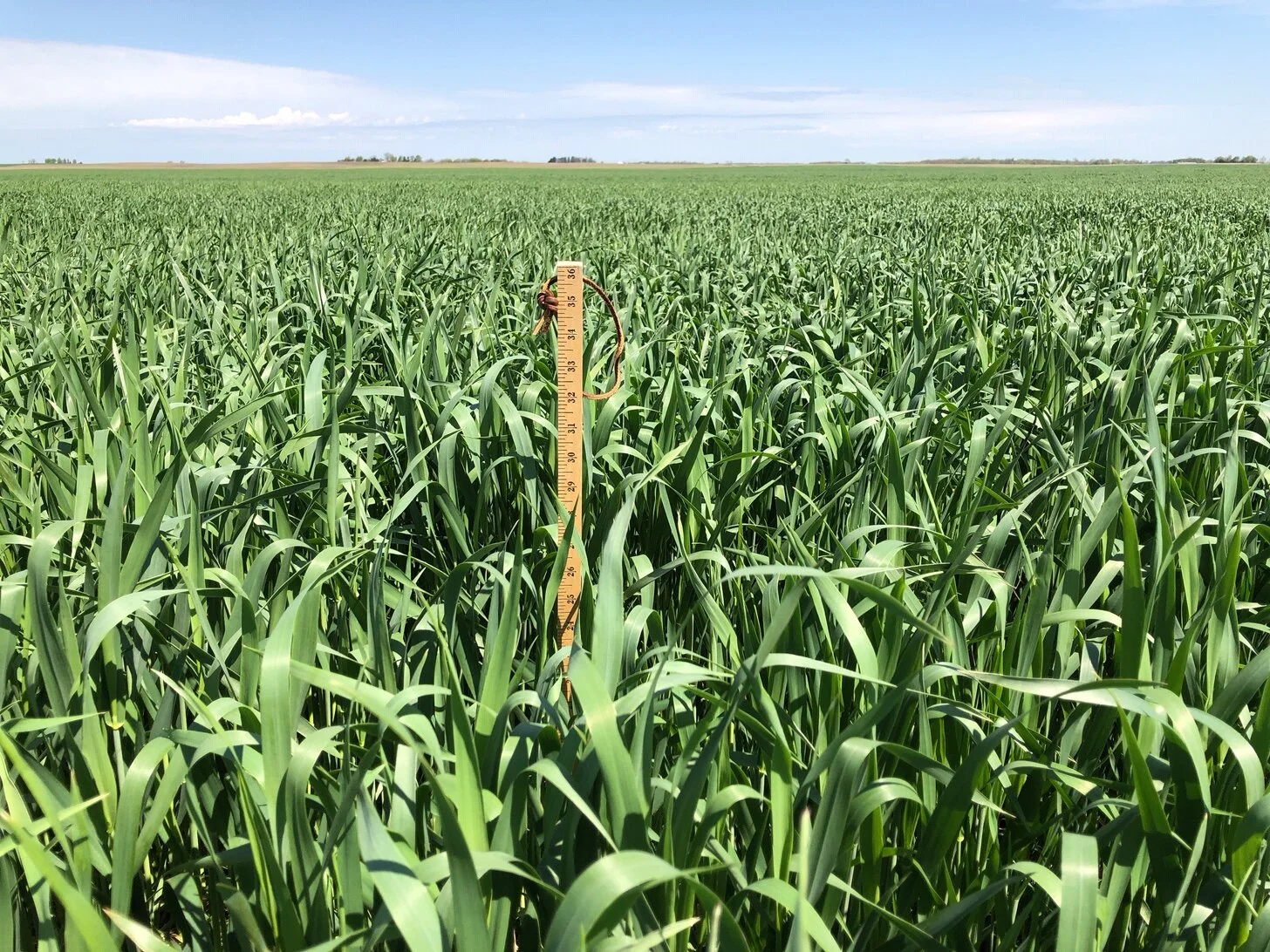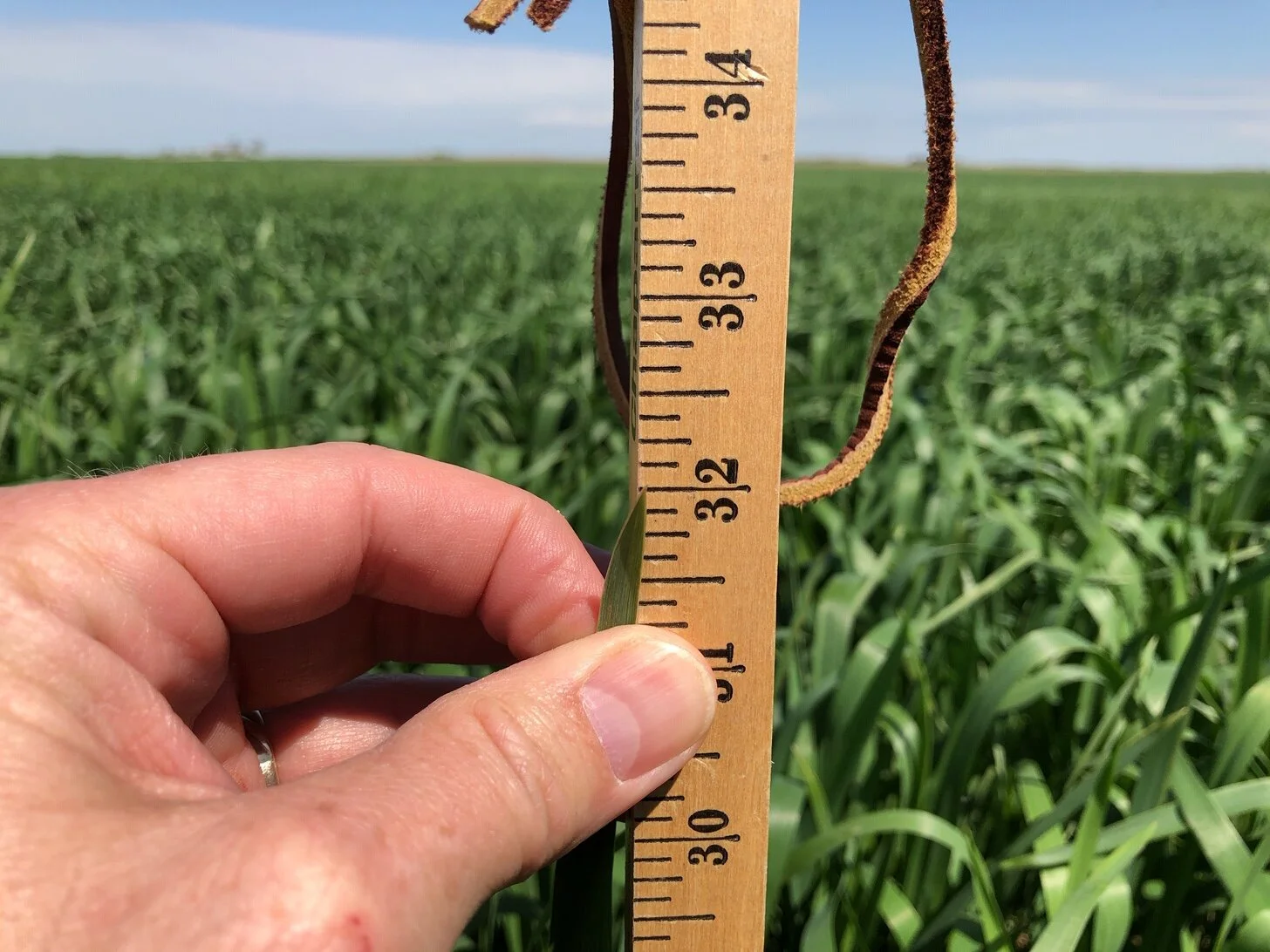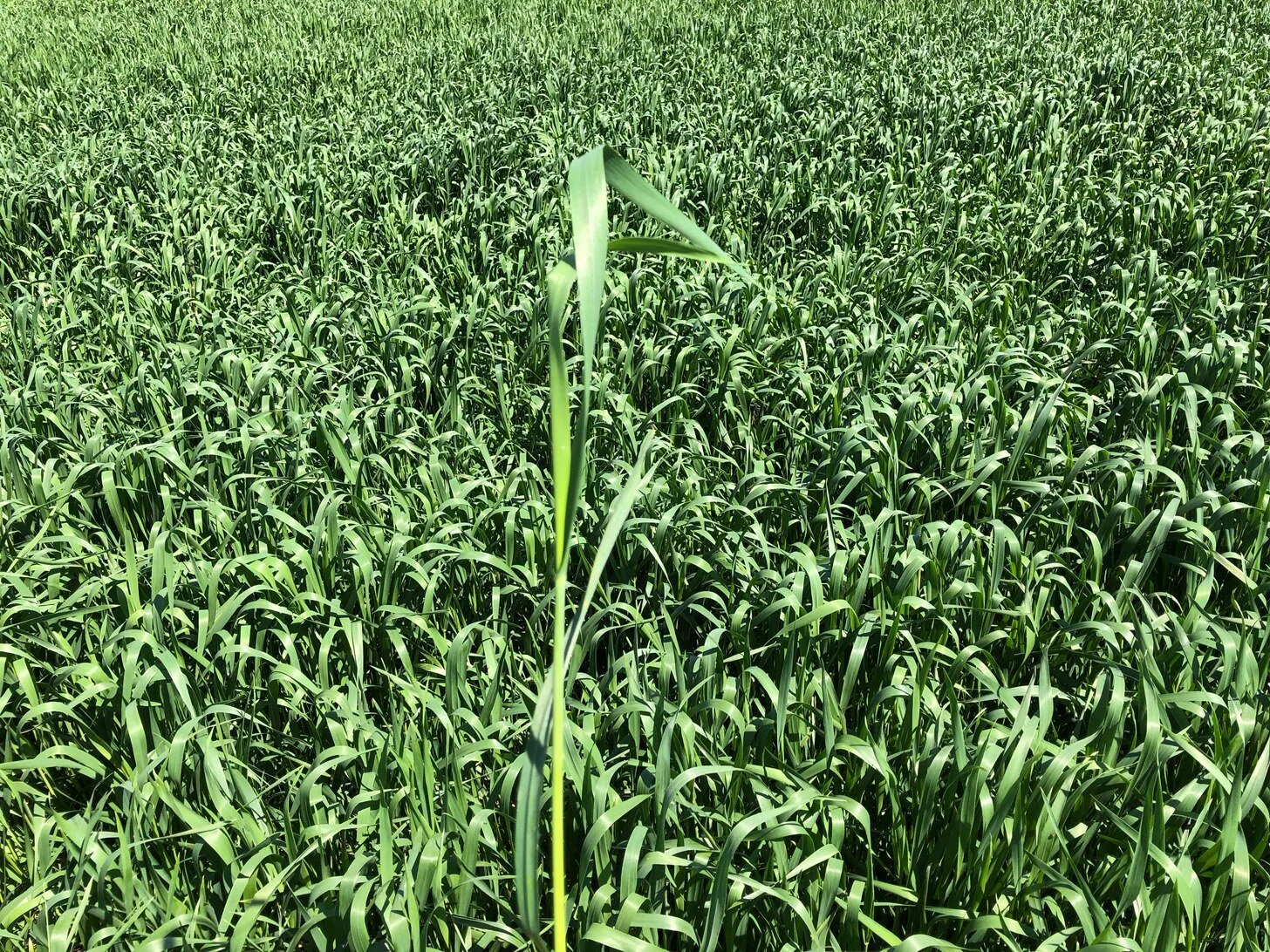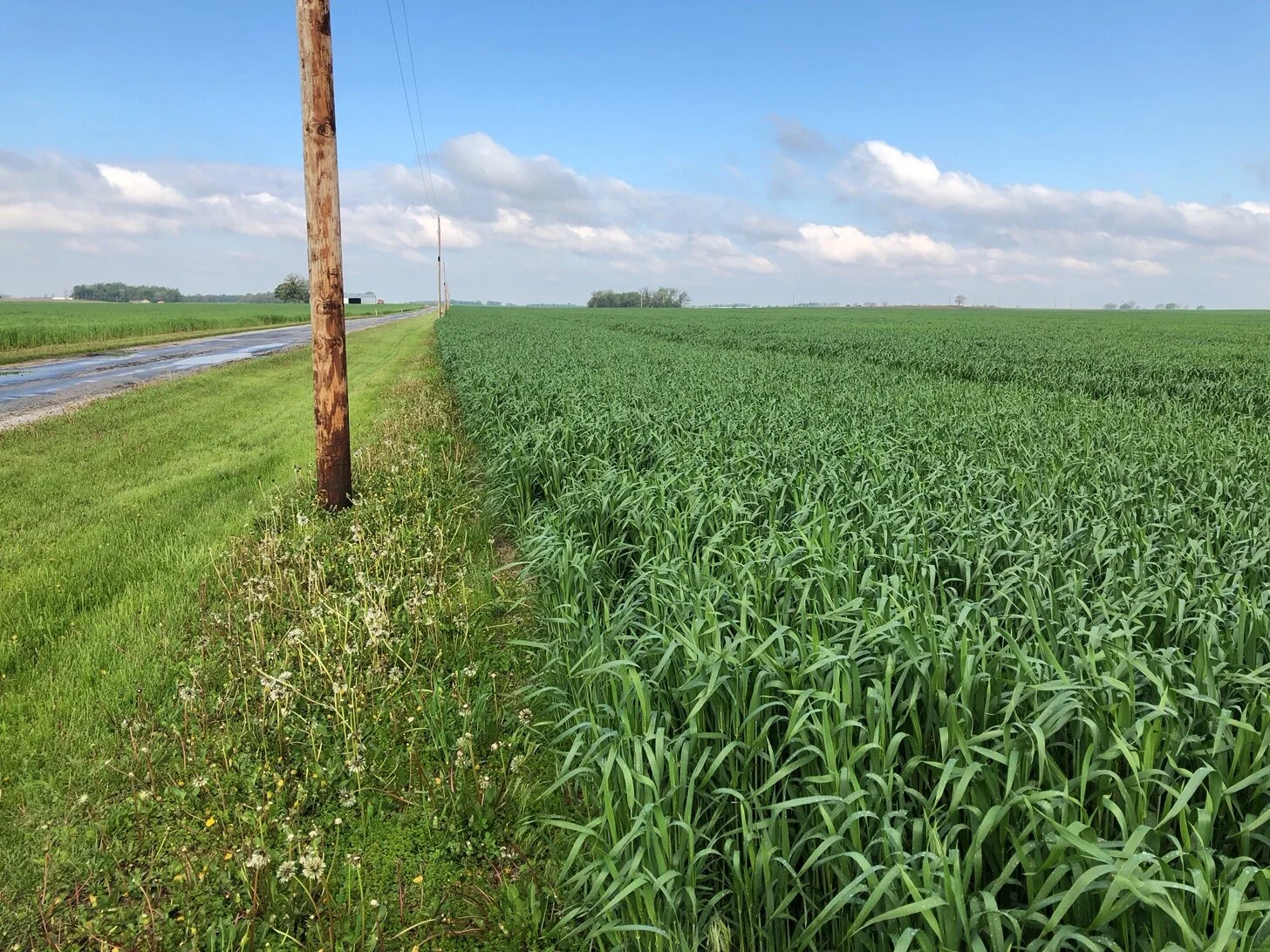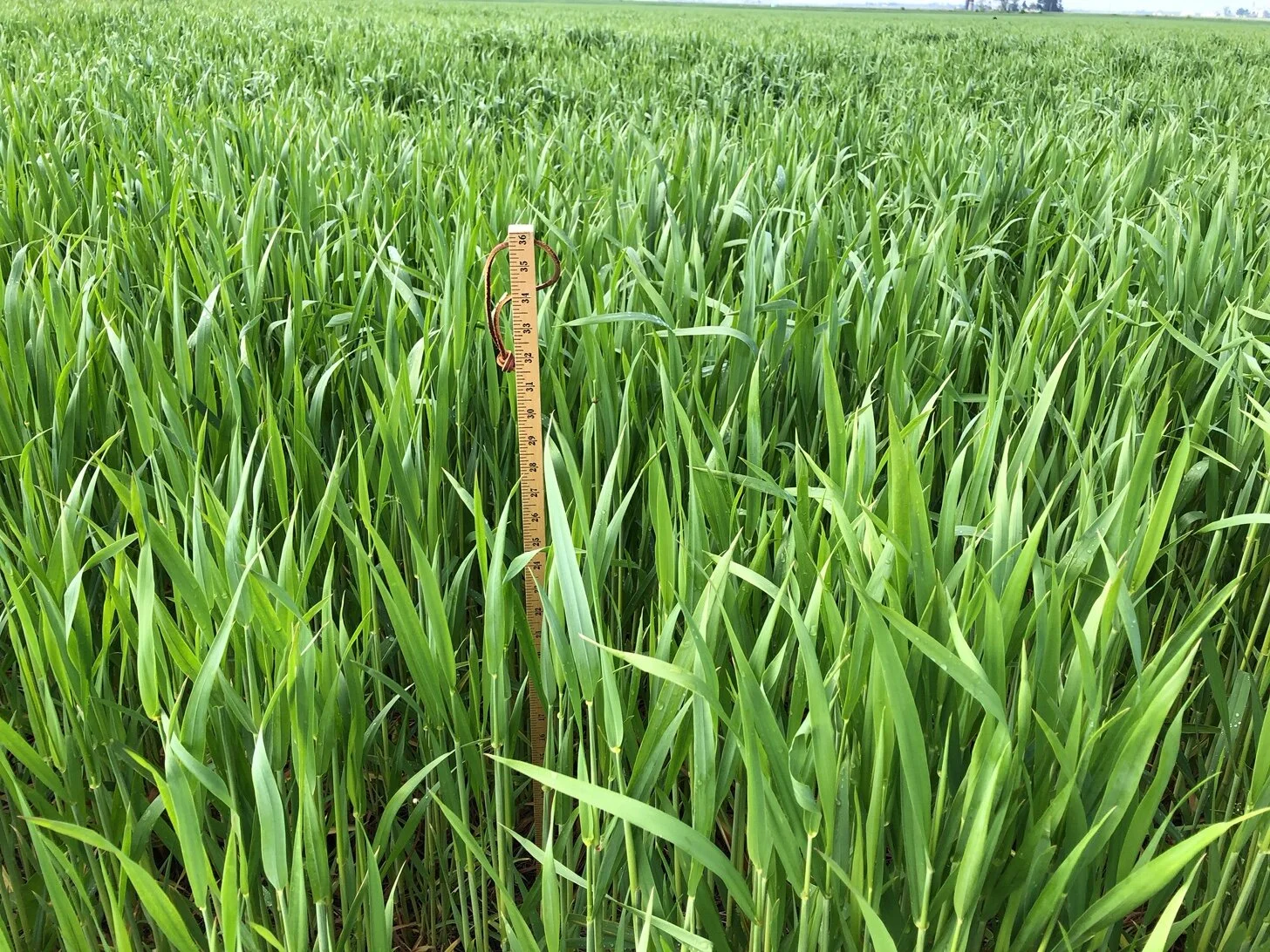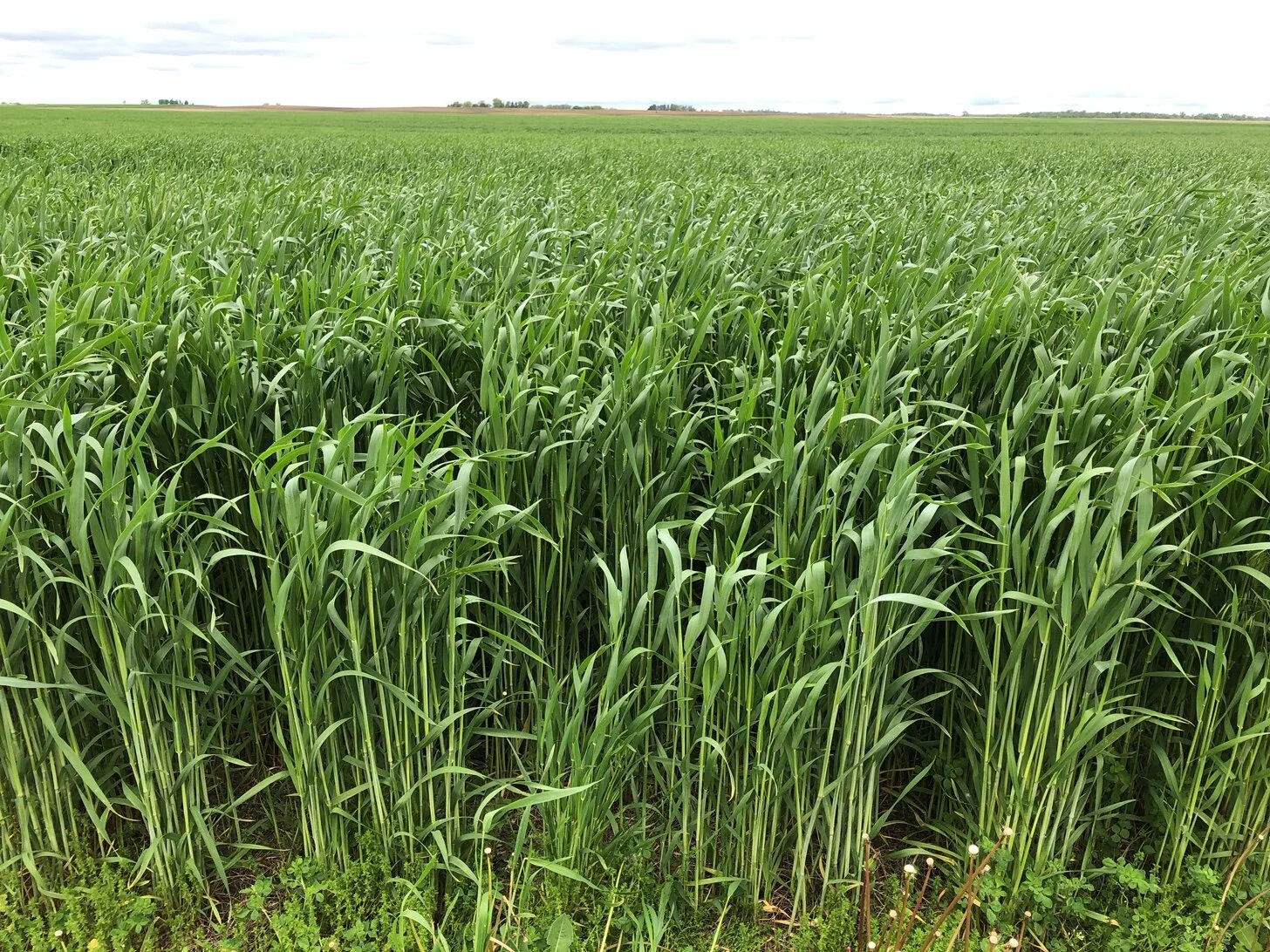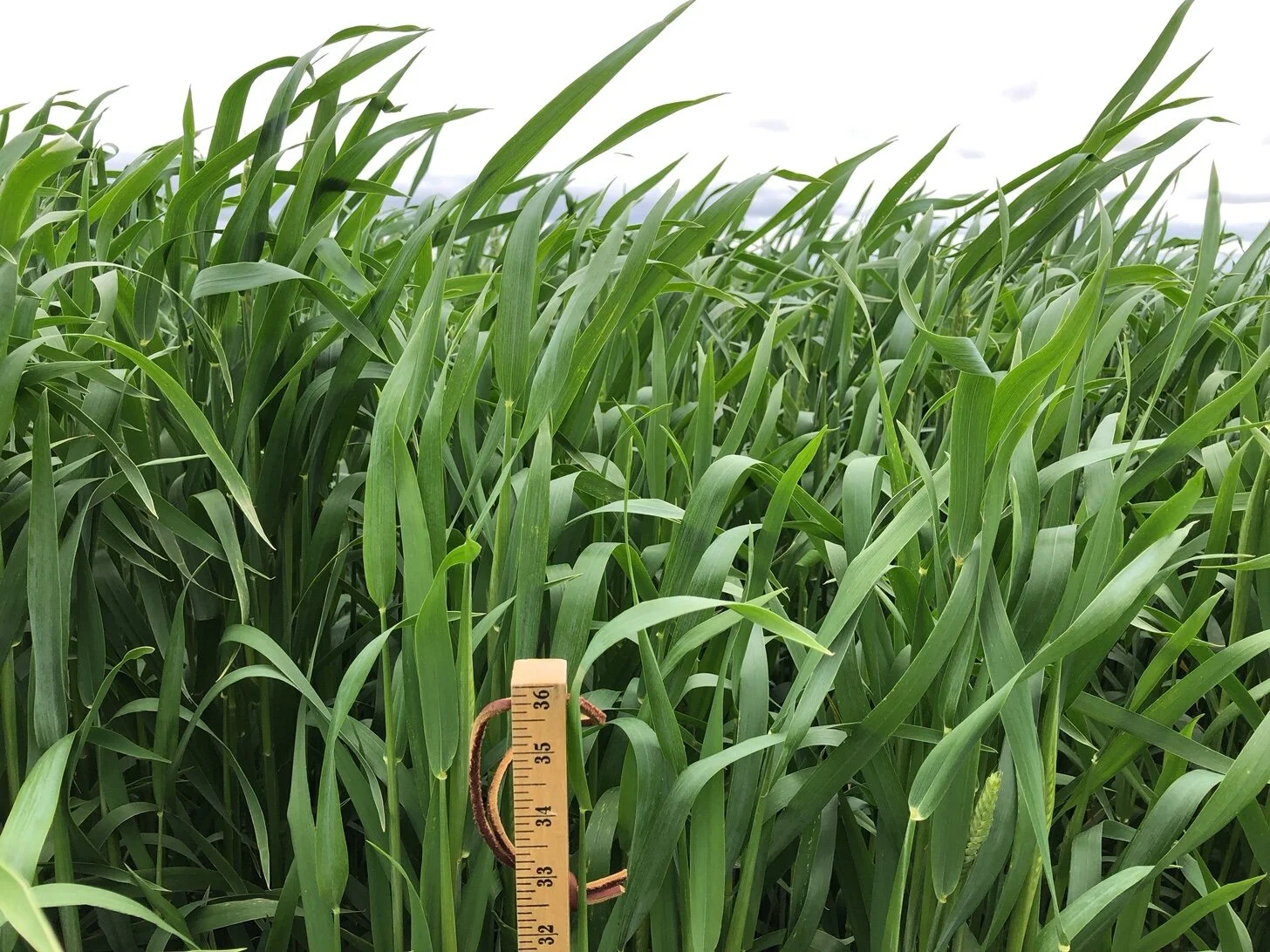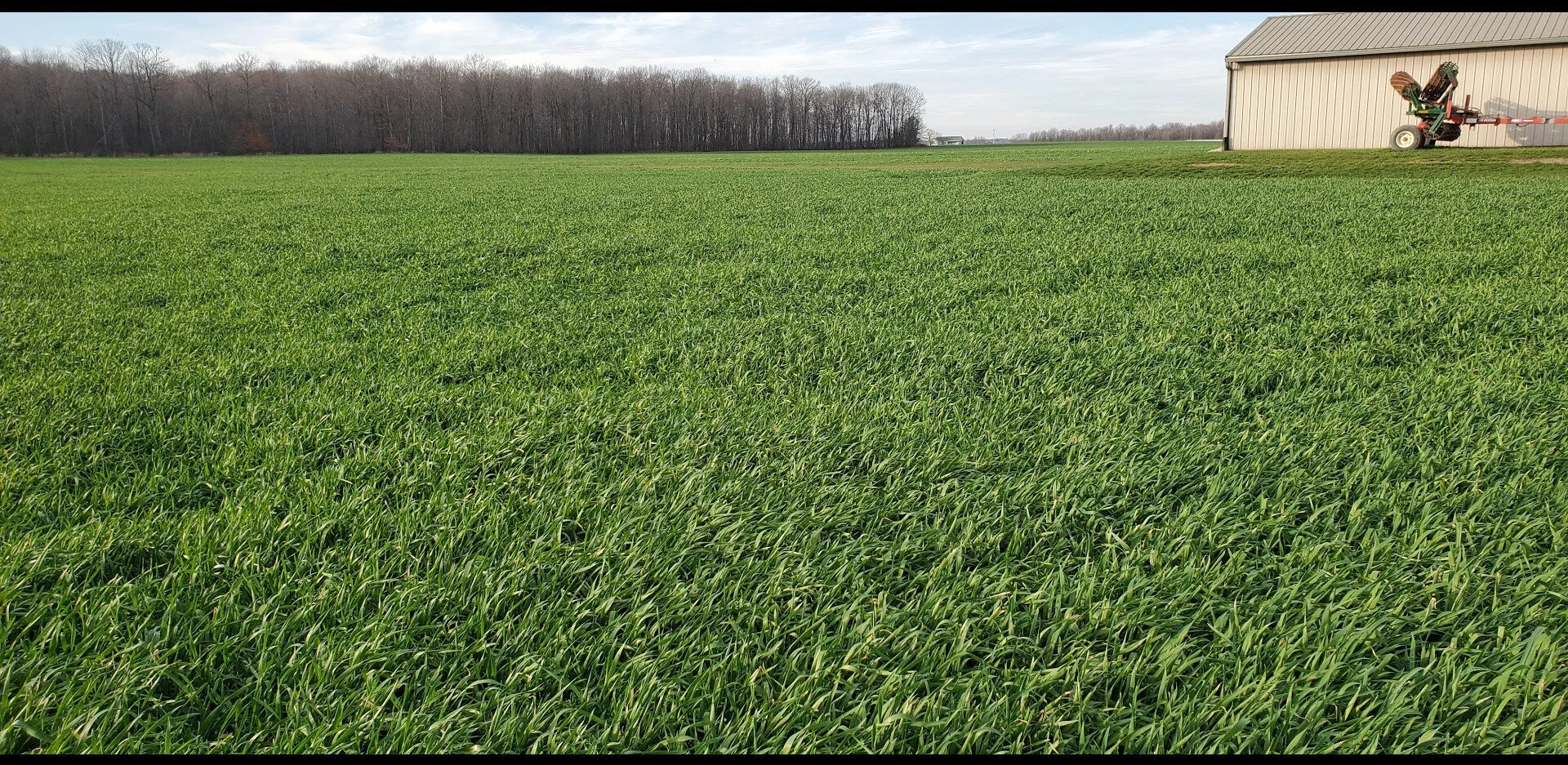Cereal Grains - Fall Seeded
Cereal grains are a great way to get additional forage in the fall and into the following spring.
Graze King 90 Forage Cereal Rye
Graze King 90 is a fall planted cereal grain that can be used as a forage in the following spring. Planting dates range from September to late November, depending on your latitude and growing conditions. Cereal rye is very adaptable because of its ability to be planted very late in the fall yet have outstanding winterhardiness.
Graze King 90 has been selected for improved forage yields and quality due to increased tillering and leafiness. Dry matter yields can range from 2 to 4 T/A plus. Graze King 90 can be grazed in the fall as long as 4” of leaf area is left on the plant. It can be mixed with oats and turnips/radishes for improved fall grazing.
Fertility management for Graze King 90 is very similar to wheat. It requires about 30 lb/A of nitrogen in the fall, whether it is from manure, legume nitrogen credits such as soybeans, or commercial fertilizer. In the spring, cereal rye performs optimally with 60-70 lb/A of N. This can be applied at the same time wheat is being topdressed. Excess nitrogen can cause lodging and nitrogen runoff.
Graze King 90 works well after corn silage, soybeans, or a summer annual crop such as Sweet Six BMR sorghum sudangrass. In the fall it will remain vegetative. The overwintering process will promote vernalization and the cereal rye will begin its reproductive life cycle in the spring.
Harvest in the Midwest usually occurs in late April or early May. Optimal harvest is at the flag leaf stage. Once heading occurs, forage quality begins to drop, with crude protein (CP) decreasing and NDF and ADF increasing. Realize that the more growing degree days (GDD), the more rapidly cereal rye can mature.
If the temperature is in the 70's in late April, cereal rye can go from vegetative to headed out in only a few days. Pay attention as the crop matures to the weather and the plants. Cereal rye can be grazed, hayed, chopped, or wet wrapped.
Valor Winter Barley
Valor Winter Barley is a very winter hardy, high yielding, disease resistant, six row feed barley with a high test weight. The awns on Valor are short. Valor has very high yields in Penn State University winter barley trials with very good standability.
It is early maturing and exceptionally winterhardy in Michigan, Indiana, New York, and Pennsylvania trials. Valor has excellent resistance to powdery mildew and leaf rust. Valor matures approximately the same time as cereal rye (late April/early May) and can be fed to most production livestock species and horses.
Valor made into haylage has excellent forage quality. Valor is quick to establish.
VALOR USES
As a high yielding grain crop
As an early maturing, high quality haylage
As a grain to feed most animals (including horses)
Late fall and winter grazing
TriCal Flex 719 Fall Triticale
TriCal Flex 719 Tritcale Tech Sheet
TriCal Flex 719 is a new winter triticale that CISCO is proud to offer for forage producers. It is a medium height, high yielding, high quality forage crop. It can be seeded after corn silage and harvested in the spring. It has reduced awn (beard) length as compared to other triticales. TriCal Flex 719 shows great yield potential as a wide adaptation across the northern half of the US.
TriCal Flex 719 Fall Growth
Below are 3 pictures of TriCal Flex 719 Triticale from the fall of 2020 in northern Michigan.
Cereal Rye
Cereal rye can be a great dual purpose crop. It has a wonderful fibrous root system that can reach 40” in depth to improve soil tilth. It has an allelopathic effect that can suppress weed growth and has been show to help control marestail.
It can be seeded from mid-September to late November. In some situations, it can even germinate under the snow. Cereal rye is a very winter hardy plant that can thrive in almost all Midwestern winters.
As a cover crop, cereal rye can be seeded with Scav-N-ger or Groundhog radishes. It can be broadcast or drilled. Seeding rates range from 35 to 70 lb/ac as a cover crop.
For forage management, please refer to the Graze King 90 article below. As a forage, cover crop cereal rye will generally not be as productive in either yield or forage quality as Graze King 90.
For planting guidelines, see our Seeding Information Guide.













